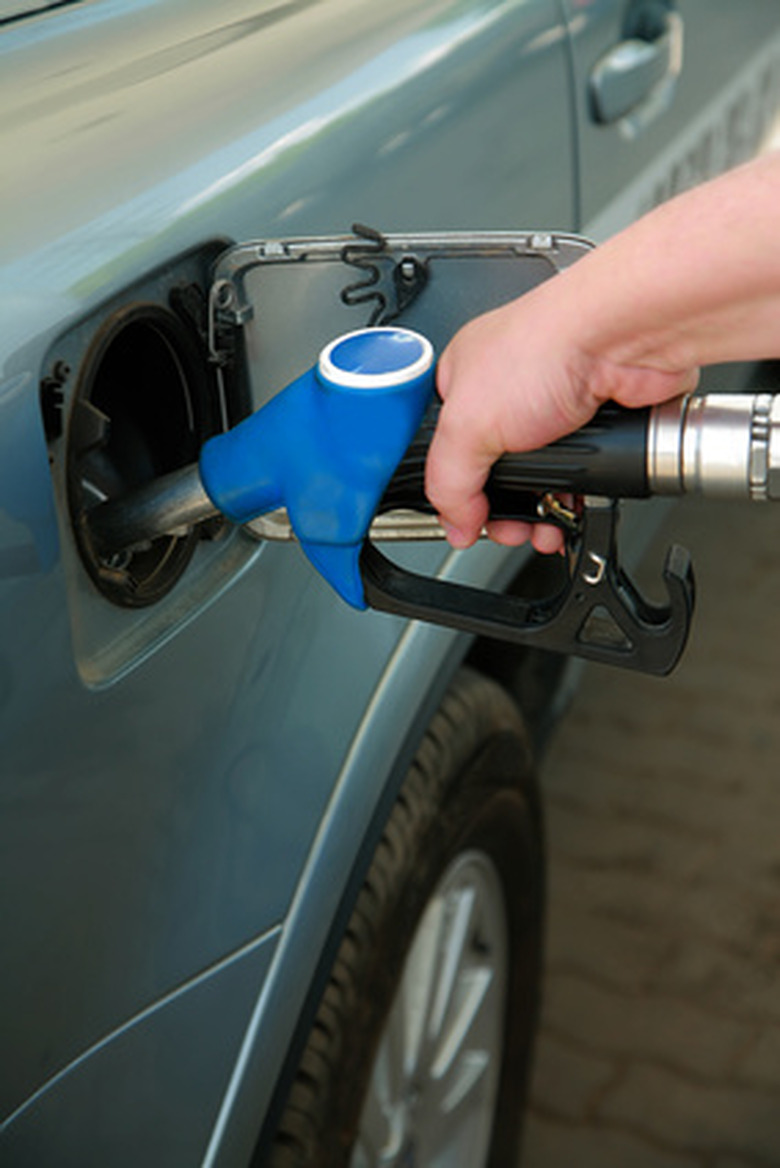How To Remove Ethanol From Gasoline
Anyone with a sufficient understanding of solubility can extract the ethanol from gasoline using little more than water. Chemists have an old axiom that "like dissolves like" with regard to polarity. That is, polar compounds dissolve other polar compounds and nonpolar compounds dissolve other nonpolar compounds. Water is polar, whereas gasoline is nonpolar. Ethanol exhibits moderate polarity and mixes with gasoline. The ethanol, however, dissolves better in water. Thus, if a person mixes gasoline and water, the two liquids will separate into layers with the water on the bottom. Vigorous mixing of the mixture, however, will transfer the ethanol from the gasoline to the water, where it is more soluble. The separation is then just a matter of "pouring off" the gasoline. Chemists perform this operation somewhat more elegantly with a piece of glassware called a separatory funnel, which simply consists of a cone-shaped flask with a rotating valve at the bottom.
Step 1
Fill the separatory funnel about one-fourth full with water, making sure the stopcock is closed so no liquid flows out the bottom of the funnel. Then fill the funnel to about the half-full point with gasoline using a plastic funnel to prevent spillage during the transfer.
Step 2
Insert the funnel's stopper, then, while holding one finger over the stopper, invert the funnel and shake it two or three times. With the funnel still inverted, rotate the stopcock to the open position to vent any gases or fumes that may have formed.
Step 3
Repeat the shaking and venting process from step 2 two or three additional times.
Step 4
Turn the funnel so that the stopcock is facing down and allow the two layers to separate for 1 to 2 minutes or until two distinct layers become visible.
Step 5
Hold the funnel over a small glass jar, then open the stopcock and allow the bottom water layer to drain into the jar. Label the jar "water/ethanol" with an adhesive label. Then pour the gasoline layer out through the top of the flask into a second glass jar labeled "gasoline."
Step 6
Add about 1 gram of anhydrous magnesium sulfate powder to the jar containing the gasoline and swirl for 30 seconds. The magnesium sulfate will absorb any water that may still be mixed with the gasoline and form a solid clump in the bottom of the jar.
Step 7
Place a piece of filter paper in a glass funnel and place the funnel on top of an empty glass jar. Slowly pour the gasoline through the filter paper. The filter paper will catch any solid pieces of magnesium sulfate. The jar should now contain gasoline that is free of both ethanol and water.
Things Needed
- Separatory funnel
- Plastic funnel
- Gasoline
- 2 small glass jars
- Adhesive labels
- 1 g anhydrous magnesium sulfate
- Glass funnel
- Filter paper
Warning
Gasoline is flammable. Wear safety goggles when working with gasoline and work only in a well-ventilated area away from open flames or other potential ignition sources.
Cite This Article
MLA
Brubaker, Jack. "How To Remove Ethanol From Gasoline" sciencing.com, https://www.sciencing.com/remove-ethanol-gasoline-7830109/. 24 April 2017.
APA
Brubaker, Jack. (2017, April 24). How To Remove Ethanol From Gasoline. sciencing.com. Retrieved from https://www.sciencing.com/remove-ethanol-gasoline-7830109/
Chicago
Brubaker, Jack. How To Remove Ethanol From Gasoline last modified March 24, 2022. https://www.sciencing.com/remove-ethanol-gasoline-7830109/
